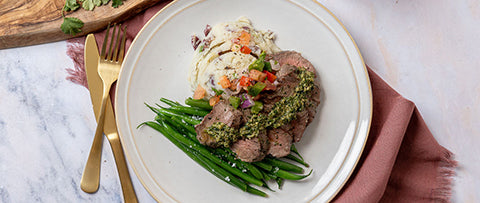Creating a food plan is one of the most effective ways to set yourself up for success in achieving your health and wellness goals. Whether you want to maintain steady energy levels, improve your eating habits, or simply feel more in control of your meals, planning ahead ensures you stay on track. A well-thought-out food plan saves time, reduces stress, and supports a balanced, nutritious diet. Here’s why a food plan matters and how you can create one that works for your lifestyle.
The Benefits of Having a Food Plan
Reduces Decision Fatigue
Making decisions about meals every day can be overwhelming, especially if you have a busy schedule. A food plan eliminates the guesswork, allowing you to focus on other priorities while still enjoying healthy, delicious meals.
Supports Balanced Nutrition
When you plan your meals ahead, you’re more likely to include a variety of nutrient-dense foods like lean proteins, vegetables, whole grains, and healthy fats. This helps you maintain balanced nutrition and avoid the temptation of grabbing unhealthy convenience foods.
Saves Time and Money
Planning meals ahead means fewer last-minute grocery trips and less food waste. By buying only what you need, you save money and time, and you’re less likely to resort to expensive takeout options.
Keeps You Accountable
A food plan helps you stick to your health goals by providing structure and keeping you accountable. With meals already planned, you’re less likely to skip meals or indulge in unhealthy snacks.
Reduces Stress
Knowing what you’re going to eat eliminates the daily stress of meal decisions. Instead of scrambling to put something together, you can relax and enjoy meals you’ve thoughtfully planned.
Easy Steps to Create a Food Plan
-
Set Clear Goals Start by identifying your health goals. Are you aiming to eat more vegetables, reduce sugar, or balance your blood sugar? Understanding your goals will guide your food choices and help you create a plan tailored to your needs.
-
Build a Framework A simple way to plan meals is by using a balanced plate framework:
- Protein: Lean options like chicken, turkey, fish, eggs, or plant-based proteins.
- Vegetables: Fill half your plate with colorful, nutrient-dense vegetables.
- Whole Grains: Include a moderate portion of complex carbs like quinoa, brown rice, or sweet potatoes.
- Healthy Fats: Add healthy fats like avocado, nuts, seeds, or olive oil for satiety.
Planning meals with this balance ensures you’re getting the nutrients you need without overindulging in any one category.
Plan for Variety
Eating the same meals repeatedly can get boring and lead to cravings. Rotate your protein sources, vegetables, and seasonings to keep your meals exciting. For example, use shredded chicken in tacos one day, in a stir-fry the next, and in a salad later in the week.
Prep in Advance
Meal prepping is a game-changer for staying on track. Dedicate a few hours each week to cook and portion out ingredients like proteins, grains, and roasted vegetables. Store them in containers for easy assembly throughout the week.
Incorporate Snacks
Don’t forget to plan for snacks! Include healthy options like nuts, Greek yogurt, hummus with veggies, or fruit. Pre-portion snacks so you’re not tempted to overeat.
When in Doubt Use fit-flavors for Convenience
If cooking and prepping aren’t realistic with your schedule, fit-flavors offers ready-to-eat, nutritionally balanced meals that make food planning easy. Our meals are designed with the right balance of protein, carbs, and fats to keep you fueled and satisfied.
How to Stay on Track with Your Food Plan
Be Flexible
Life happens, and sometimes your plan may need to shift. Keep a few versatile ingredients or fit-flavors meals on hand for days when your schedule doesn’t go as planned.
Track Your Progress
Keep a journal or use an app to track your meals and how you feel after eating. This can help you identify patterns and make adjustments to better meet your needs.
Plan for Indulgences
A food plan doesn’t have to be restrictive. Allow room for treats or dining out, but keep them in moderation. Following the 80/20 rule—eating healthy 80% of the time and indulging 20% of the time—can help you maintain balance.
Stay Hydrated
Hydration is a crucial part of any food plan. Drinking plenty of water helps digestion, keeps you energized, and reduces cravings.
Reassess Weekly
Review your plan at the end of each week. Celebrate what worked and tweak areas that need improvement. This ensures your food plan continues to align with your goals.
At fit-flavors, we understand that sticking to a food plan can be challenging, especially with a busy lifestyle. That’s why we’ve created a range of chef-crafted, nutritionally balanced meals to simplify your planning process. Our meals take the guesswork out of healthy eating, helping you stay on track with your goals without spending hours in the kitchen.
Whether you need a week’s worth of lunches or backup dinners for those hectic nights, fit-flavors offers convenient, delicious options that make meal planning effortless.
Conclusion
A food plan is more than just a tool for meal preparation—it’s a foundation for achieving your health and wellness goals. By taking the time to plan your meals, you can save time, reduce stress, and enjoy balanced nutrition that supports your energy, digestion, and overall well-being. With simple steps like setting goals, prepping in advance, and incorporating variety, you can create a plan that works for your lifestyle.
For those busy days, fit-flavors is here to provide wholesome, ready-to-eat meals that align with your food plan and make staying on track easier than ever. Start planning today, and experience the difference a well-crafted food plan can make in your life!






